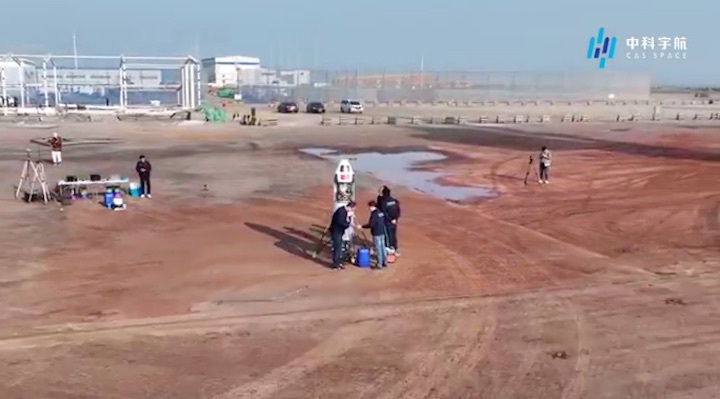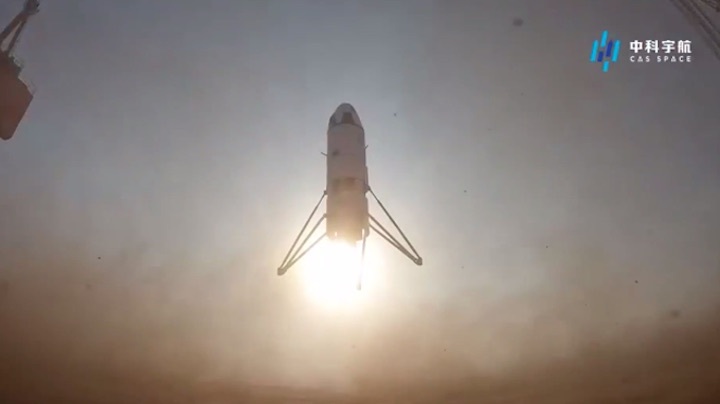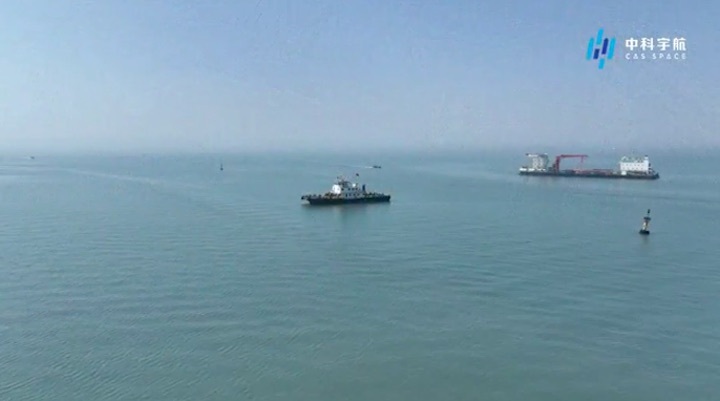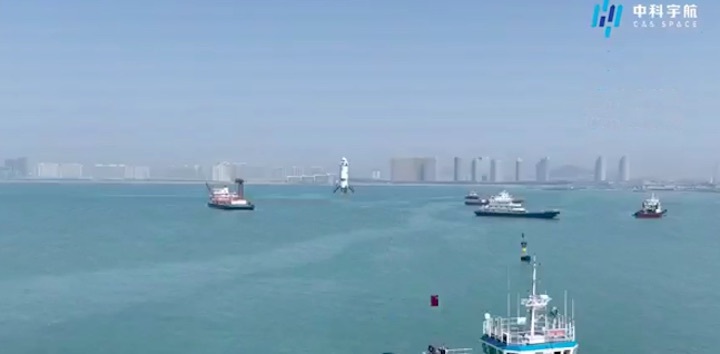6.04.2023

China recently carried out a successful rocket vertical landing test at sea, with developers at the Chinese Academy of Sciences (CAS) saying Thursday that the technology would lay the foundation for future applications including a recyclable near-space experiment platform as well as the development of space travel.
CAS Space, a commercial spaceflight firm that is partly owned by CAS, revealed that it successfully carried out the launching-from-land and landing-at-sea flight trial in Haiyang, East China's Shandong Province, which verified the rocket stage recovery at sea, communication and spacecraft tracking and measuring technology under the impact of sea clutters.
Developers also studied the flight environment at the final landing stage and examined the landing precision of the swaying pad at sea, according to the CAS Institute of Mechanics.
The rocket prototype flew at an altitude of more than 1,000 meters, descended in a smooth hovering fashion and then decelerated thanks to the engine reverse thrust. The landing speed was reduced to less than two meters per second at the final stage before the rocket touched down steadily with a landing precision of under 10 meters.
The landing test took about 10 minutes, the CAS institute revealed.
Lian Jie, a senior engineer with the institute, told the Global Times during an exclusive interview on Thursday that the 2.1-meter-long, 0.5-meter-diameter rocket prototype weighed 93 kilograms by launch, and was powered by twin engines each with a thrust of 550 newtons. A turbojet engine was used during the test to simulate a variable thrust liquid rocket engine being used during vertical landing.
The full success of the vertical sea landing of the rocket prototype has laid the foundation for future technological development for applications including the near-space scientific experiment platform, rocket stage recovery as well as space tourism, developers said.
The first flight of the near-space scientific experiment platform could come as early as the end of 2023, Lian revealed to the Global Times.
This kind of rocket recovery technology at sea would be widely applied to future rocket models including the Lijian-3 and Lijian-3 heavy lift launchers, and will contribute to China's future larger scale space exploration with further reduced costs, developers said.
Wu Weiping, another senior engineer with CAS Space, also elaborated on the prospects of future space travel applications, saying that passengers inside the payload would have a weightless experience at some 100 kilometers above the Earth at near space for three to seven minutes.
Such space travel would answer to the public aspiration of space entry, and such space shuttle would also accumulate precious data for future space exploration and planetary tourism, Wu added.
US SpaceX managed to realize its first successful rocket stage recovery for its two-stage Falcon 9 rocket at sea on the drone ship Of Course I Still Love You in April 2016 after four previous attempts ended in destruction of the booster upon impact.
When asked how the CAS rocket stage recovery at sea is different from that of the SpaceX, Lian explained that "ours is based on the domestic technology, both software and hardware, and we are exploring technology thresholds such as the variable thrust management, precision positioning and the stabilizing technology on our own."
Pang Zhihao, a Beijing-based senior space expert, told the Global Times on Thursday that landing the rocket stage at sea could save the cost for launching significantly, as the landing pad could be moving at sea.
"To recovery stage on land could save the power the rocket would have to spend to fly back to in-land landing site, which could be some 40 percent loss of rocket's payload carrying capacity, whereas the number for a sea recovery is only 20 percent," Pang explained.
Also, although sea recovery would raise the level of difficulty due to the complicated sea conditions, it could also help avoid the impact damage during an in-land landing attempt when such landing meets a failure, Pang noted.




Quelle: Global Times
